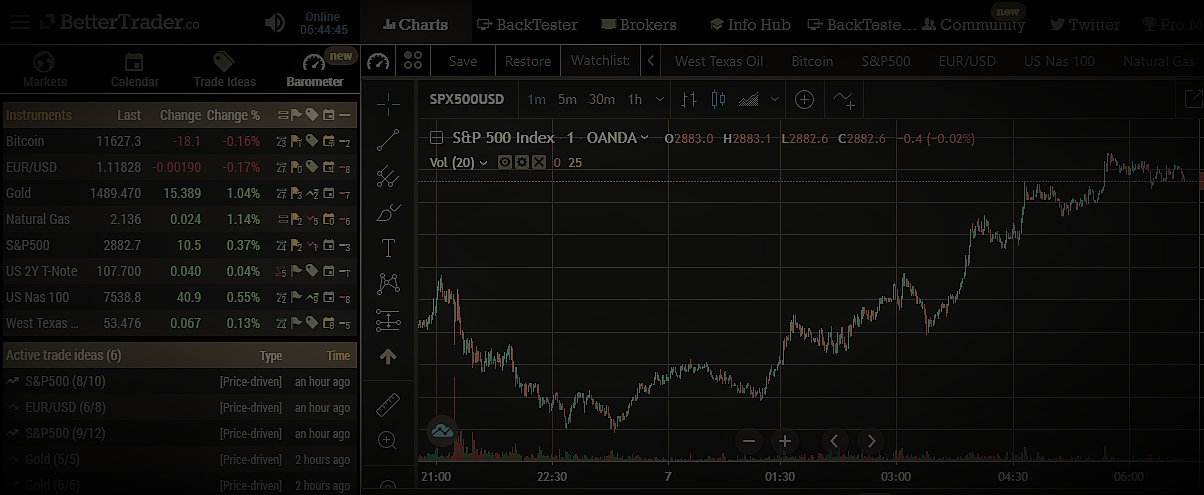Understanding the Wyckoff Method Approach
Richard Wyckoff, the founder of the Wyckoff method, is considered to be one of the most revered technical analysts in the history of finance. Born in 1873, Wyckoff started at the age of 15 as a stock runner for a brokerage firm in New York. He founded and led the Magazine of Wall Street, and was able to observe major trends in the stock market over the course of his career.
During his tenure as an analyst of the markets, he noticed consistent market movements and watched countless traders fall for the same traps when attempting to analyze market trends. He developed the Wyckoff method of analysis initially to help traders understand the patterns of the stock market, although this method can be expanded to any market including the futures market and forex.
The Five-Step Framework:
Step #1: Determine the Present Position and Future Trend of Market
Develop an understanding of the current supply-demand structure of the market, in order to estimate the trend of prices in the future. With higher demand than supply, the market prices will be driven up, and when higher supply than demand, prices will drop to create more demand. An assessment of these patterns will allow traders to decipher whether they should be taking long or short positions, as well as understand the duration of their investments.
Step #2: Select Stocks That Follow Market Trend
Looking at a company’s beta, the covariance between the movements of the market and the volatility of the stock, are helpful with understanding which stocks to select. During times when traders expect the market to rise, selecting stock with betas greater than 1 will give traders greater returns than the market. However, when traders are fearful that the market will fall, they should select stocks with negative betas, that have negative correlations with the market (Gold, The Campbell Soup Company (NYSE: CPB)), or short certain stocks with higher betas. This method of stock selection will allow traders to take profits in both times of market exuberance as well as a downfall.
Step #3: Select the Correct Stocks According to Point-and-Figure Method
Stocks should be selected in relation to the price targets that traders are looking to reach when making investments. The Wyckoff method uses a technique involving the Point-and-Figure projections for trades (see Point-and-Figure Analysis for more information). The Wyckoff law of cause and effect compares the horizontal point-and-figure count within a trading range, while the price movement relates to the effect of the P&F. Trades should only be made when there is significant “cause” to create an “effect,” and point-and-figure analysis allows traders to view this relationship.
Step #4: Determine When Stocks are Prone to Move
The Wyckoff method outlines nine steps to determine whether a stock is worth buying or selling. These steps help identify whether entering the method during times of market rally or downfall are warranted, by understanding markets supply and demand for securities. More information on the nine steps can be found in Guiding Trades by Wyckoff Method Nine Tests to Buying or Selling.
Step #5: Initiate Trades During Market Dislocations
Understanding when markets are going to rise and fall is essential to creating the most value during trades. It is most beneficial for traders looking to buy stocks during times when the market is undervalued during a downturn and is bound to reverse into an upcycle. Conversely, traders looking to short stock should place their trades during peaks of market cycles, when there is an inclination that the market will reverse down. Wyckoff principles teach traders to anticipate market turns, and by following Wyckoff’s 3 laws outlined below, traders will be ready to act at the right time of the markets.
Wyckoff’s 3 Fundamental Laws of Analysis
Wyckoff’s chart-based analysis requires an understanding of three fundamental laws. These laws will assist traders to decipher the price direction of securities, as well as the optimal time to trade within a price range. The three laws are the following:
- Supply-Demand function determines the price direction – This is the fundamental principle of trading. With more supply than demand, there will be a downward pressure of pricing because of the excess of securities. However, with more demand, the prices of securities will be driven up due to scarcity.
- Cause-and-effect relationships drive markets and prices – utilizing the horizontal point-and-figure charts allow traders to assess how the movement of stock charts will affect prices. During this relationship, a force of accumulation or distribution is seen as a trend in upward movement or downward.
- The law of effort allows traders to view movements in advance – This method can alert traders of possible price changes due to divergences in volume and price. The volume of trading is often a signal of price movements, so trading when the volume is high will allow traders to reap the benefits of large price swings.
This article is part two of the Wyckoff Method analysis series. Click here for part 2

















